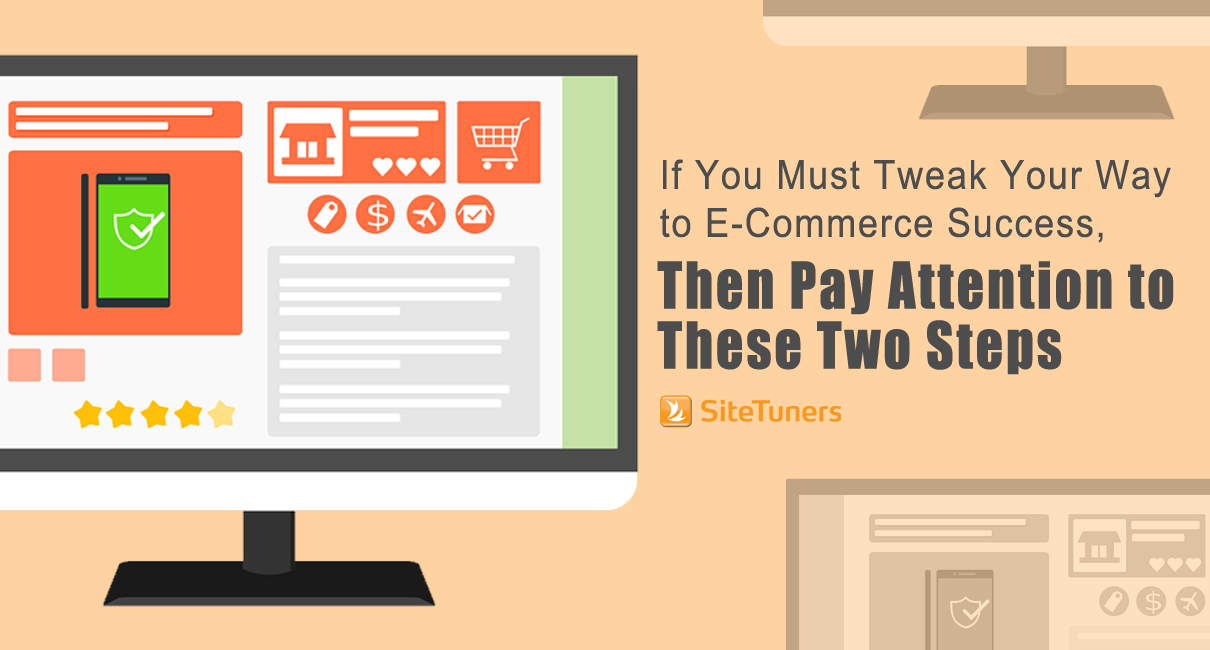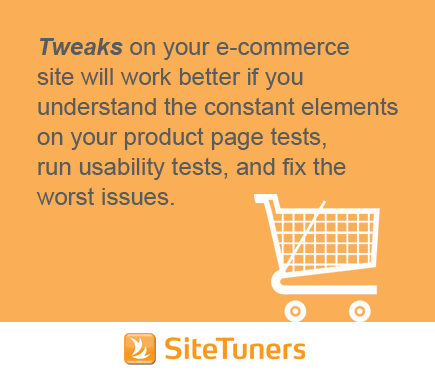
If, however, your success rates are fairly high — in online analytics parlance, this translates to low bounce rates for navigation pages as well as user surveys saying MOST users can get to the product they need — then tweaks are your friend. This doesn’t mean you should only be running split tests to make minor improvements, but it does mean you’re closer to that point.
Before you run your A/B tests, however, it makes sense to do your homework. Consider the following two points:
1. Run usability tests and fix the worst problems before split testing. There are a lot of tests in online marketing, and the three of the critical ones — user acceptance testing, split or multivariant testing, and usability testing — tend to confuse some marketers. The latter two are particularly prone to getting misunderstood, so let’s clear this up:
- Split or multivariant tests involve serving multiple versions of a page to users, and seeing which one performs better (the goal can be lower bounce rate, better conversion rate, more sales, etc.).
- Usability tests involve giving a small number of users some tasks and observing them as they conduct the tasks, watching out for problems.
By running usability tests, you can make the correct tweaks to your website BEFORE you hone in on more targeted goals. Before you run split or multivariant tests, it makes sense to ensure that users don’t have critical, visit-ending mistakes first. Steve Krug, one of the biggest names in usability, indicates that by watching three people navigate your site and identifying the worst offenders, and then using the simplest possible fixes to correct your site, you can do a world of good.
You should take care of that before tackling more targeted goals like increasing conversion rates on product pages. If you take care of the worst issues first, once you do get to your detail pages, your changes will have more of an impact.

After you’ve run your usability test, and as soon as you’re ready to prepare your challenger page or pages, what you need to do is think about the options you have for your e-commerce pages:
- If you have enough user reviews (no one likes to be the one starting the slow clap), how much the reviews are emphasized should be part of the test. Make sure you follow general user review guidelines.
- You need to display either the number of stock left or the promo expiration if those are in your toolbox. The fear of missing out should be part of the test — if you’re technologically capable of it. What you’ll be testing is how emphasized those items are.
- You should have no tests in which the call to action (CTA) is a de-emphasized part of the page. You still need to follow general CTA guidelines as you’re testing.
- You should provide shipping details and still follow best practices in that area.
You’re not losing any creative freedom while running your tests by ensuring they have the necessary elements. Split or multivariant tests are about getting different good pages in front of people, and seeing which ones are great at conversion. They’re not about throwing all ideas at users to see which ones make sense. They don’t give you any excuses not to do your research first.
That’s really it. If you can run usability tests first, fix the worst problems using the simplest solutions, and know which elements are constants on your product page tests, then tweaks will be more effective for your website.
This article originally appeared in Tim’s Retail Online Integration column October 27, 2014

